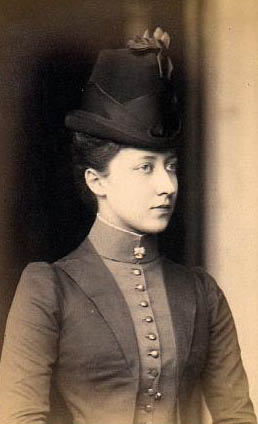by Susan Flantzer © Unofficial Royalty 2014

Henry the Young King, son of King Henry II of England; Credit – Wikipedia
Henry the Young King was born at Bermondsey Abbey in London, England on February 28, 1155, where his parents who had been recently crowned were holding court. He was the second child of King Henry II of England and Eleanor of Aquitaine. Henry’s elder brother, William, Count of Poitiers, died in 1156 at the age of two, leaving Henry as the eldest child of King Henry II.
Henry had seven siblings:
- William IX, Count of Poitiers (1153 – 1156), died in childhood
- Matilda of England, Duchess of Saxony and Bavaria (1156 – 1189), married Heinrich the Lion, Duke of Saxony and Bavaria, had five children, including Otto IV, Holy Roman Emperor
- King Richard I of England (1157 – 1199), married Berengaria of Navarre, no children
- Geoffrey II, Duke of Brittany (1158 – 1186), married Constance, Duchess of Brittany, had three children
- Eleanor of England, Queen of Castile (1162 – 1214), married King Alfonso VIII of Castile, had twelve children including King Enrique I of Castile; Berengaria, Queen Regnant of Castile and Queen of León; Urraca, Queen of Portugal; Blanche, Queen of France, and Eleanor, Queen of Aragon
- Joan of England, Queen of Sicily (1165 – 1199), married (1) King William II of Sicily, no surviving children (2) Raymond VI, Count of Toulouse, had two children, Joan died in childbirth with her third child who also died
- King John of England (1166 – 1216), married 1) Isabella, 3rd Countess of Gloucester, marriage annulled, no children (2) Isabella, Countess of Angoulême; had five children, including King Henry III of England; Joan of England, Queen of Scots, and Isabella of England, Holy Roman Empress

13th-century depiction of Henry and his legitimate children: (l to r) William, Young Henry, Richard, Matilda, Geoffrey, Eleanor, Joan, and John; Credit – Wikipedia
On November 2, 1160, five-year-old Henry was married to two-year-old Marguerite of France. Marguerite was the daughter of King Louis VII of France (who happened to be the first husband of Eleanor of Aquitaine) and his second wife Constance of Castile. The reason for the early marriage was political. Marguerite’s dowry included the disputed territory of the Vexin and King Henry II wanted to possess it.
Henry was educated under the guidance of his father’s chancellor Thomas Becket. In 1170, William Marshal, 1st Earl of Pembroke was appointed his tutor and was also his tournament team leader until 1182 when Henry and Marshal had a falling out. Henry participated in many tournaments in northern and central France and became one of the major patrons of the sport.
When Henry was 15, his father decided to adopt the French practice of ensuring the succession by declaring his heir the junior king. Henry was crowned at Westminster Abbey on June 14, 1170, by Roger of Pont L’Évêque, Archbishop of York. Marguerite was not crowned at this time and this greatly infuriated her father King Louis VII. To appease the French king, another coronation which included Marguerite was held on August 27, 1172, at Winchester Cathedral. Marguerite and Henry had only one son, William, who was born prematurely on June 19, 1177, and died three days later.
Despite his rank of junior king, King Henry II refused to grant Henry land or allow him to participate in the government. With his mother and his brothers Richard (the future King Richard I of England) and Geoffrey, he nearly overthrew King Henry II in 1173. In 1182–83, Henry had a falling out with his brother Richard when Richard refused to pay homage to him on the orders of King Henry II. As he was preparing to fight Richard, Henry became ill with dysentery (also called the bloody flux), the scourge of armies for centuries. It was clear that Henry was dying and he repented for his sins by prostrating himself naked on the floor before a crucifix. Henry the Young King died on June 11, 1183, in Martel, France holding a ring his father had sent as a sign of his forgiveness. Henry was so popular that the people of Le Mans and Rouen almost went to war for the custody of his body. He had requested to be buried in Rouen Cathedral, but as his body traveled through Le Mans, the bishop ordered his body to be buried at the cathedral there. The Dean of Rouen Cathedral had to resort to legal means to bury Henry according to his wishes. Ironically, the tombs of the perpetually fighting brothers, Henry and Richard, lie on opposite sides of the altar of Rouen Cathedral.
Henry the Young King in literature:
- Henry is an important character in Sharon Kay Penman‘s novels Time and Chance and The Devil’s Brood.
- Henry is an important secondary character in Elizabeth Chadwick‘s novel The Greatest Knight about William Marshal.
- The consequences of Henry’s death plays an important role in the events of James Goldman’s play The Lion in Winter (also a film) which features Henry’s parents and three younger brothers, the future King Richard II of England; Geoffrey, Duke of Brittany; and the future King John of England.
Tomb of Henry the Young King in Rouen Cathedral; Credit – Wikipedia
This article is the intellectual property of Unofficial Royalty and is NOT TO BE COPIED, EDITED, OR POSTED IN ANY FORM ON ANOTHER WEBSITE under any circumstances. It is permissible to use a link that directs to Unofficial Royalty.














